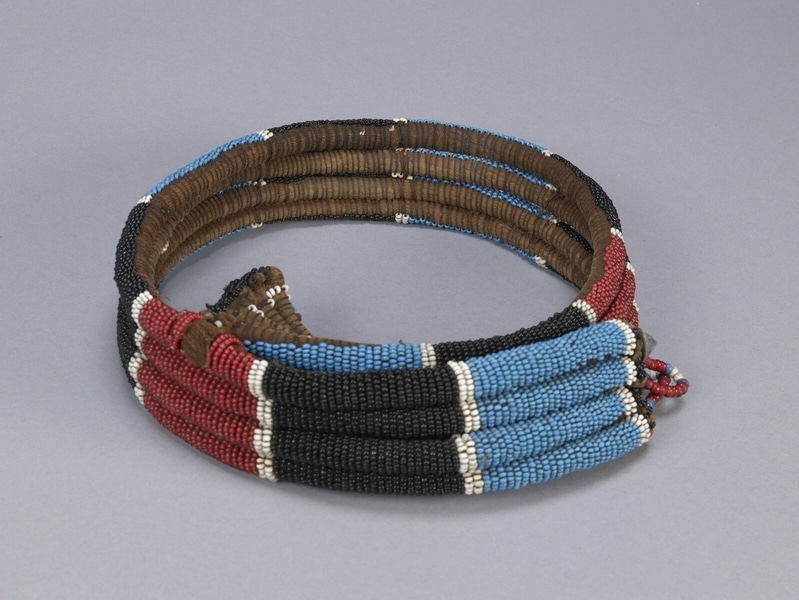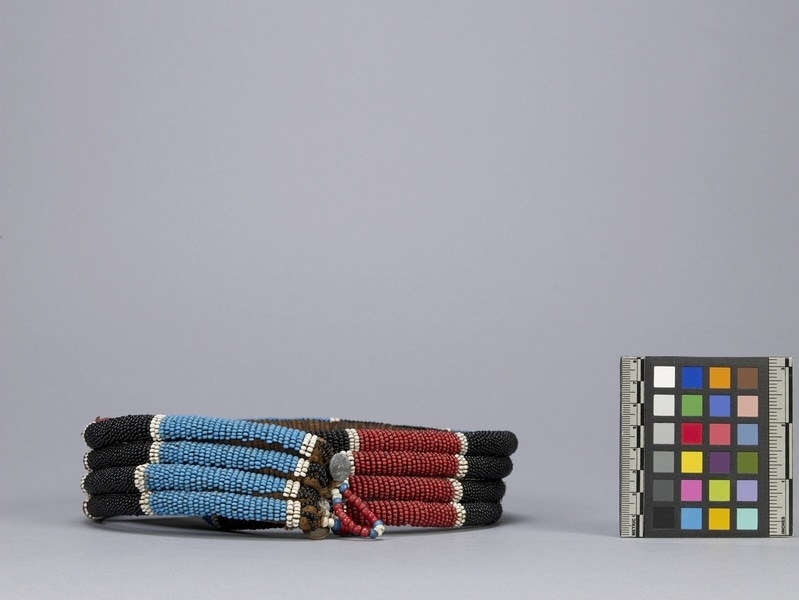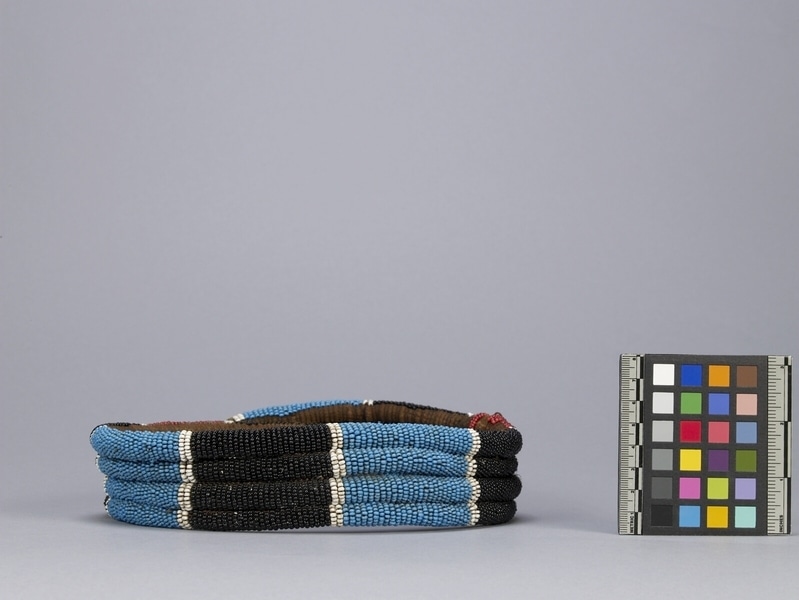Belt Item Number: 1060/76 from the MOA: University of British Columbia



Description
A coiled round beaded belt with four cylindrical rows stitched together. The design consists of alternating rectangles of blue, black, and red beads with white beads in between. It is beaded on the outside. One end has a loop of blue, red, and white beads with a conical metal button while the other end has just a conical metal button.
History Of Use
Belts, as beadwork ornaments, were worn around the waist or hips, and made up a large part of the traditional dress of Zulu children, courting aged people, and married people between 1960-1980. In the early 20th century beaded items were primarily used for courting Zulu adults, and to display wealth and social standing. Though a unisex accessory, belts are only made by women who can give them as a gift to a male suitor, as a means to regulate the relationships between man and woman. Alternatively, a woman can opt to wear the belt herself, often accessorizing it with other beaded items. Typically more numerous and elaborate beaded items are worn at special or ceremonial occasions, where the wealthiest members of society make their standing known. Today these belts can still be found around peoples’ necks or for sale in bead artisan’s shops, though they are less prominent in day-to-day life.
Specific Techniques
Belts are made using a bead working technique called gongqoloza, which involves wrapping a string of already-strung beads around a core, made either from cloth or glass. In the Msinga region, belts (amafacane) have a core of grass; these belts are especially popular with courting age girls.
Iconographic Meaning
Each colour in Zulu beadwork is associated with a traditional proverb, allowing for a translation of meaning; the specifics of the message are known only to the maker. In this belt, the colours white (obumhlope), black (obumnyama), red (umgazi), and blue (inkankane) are used.
Item History
- Made in Natal, South Africa between 1870 and 1930
- Owned by Sisters of Saint Ann Museum
- Owned by B.C. Provincial Museum before September 6, 1985
- Received from B.C. Provincial Museum (Transferring institution) on September 6, 1985
What
Who
- Culture
- Zulu
- Previous Owner
- Sisters of Saint Ann Museum and B.C. Provincial Museum
- Received from
- B.C. Provincial Museum (Transferring institution)
Where
- Holding Institution
- MOA: University of British Columbia
- Made in
- Natal, South Africa
When
- Creation Date
- between 1870 and 1930
- Ownership Date
- before September 6, 1985
- Acquisition Date
- on September 6, 1985
Other
- Item Classes
- beadwork
- Condition
- fair
- Current Location
- Case 102
- Accession Number
- 1060/0076